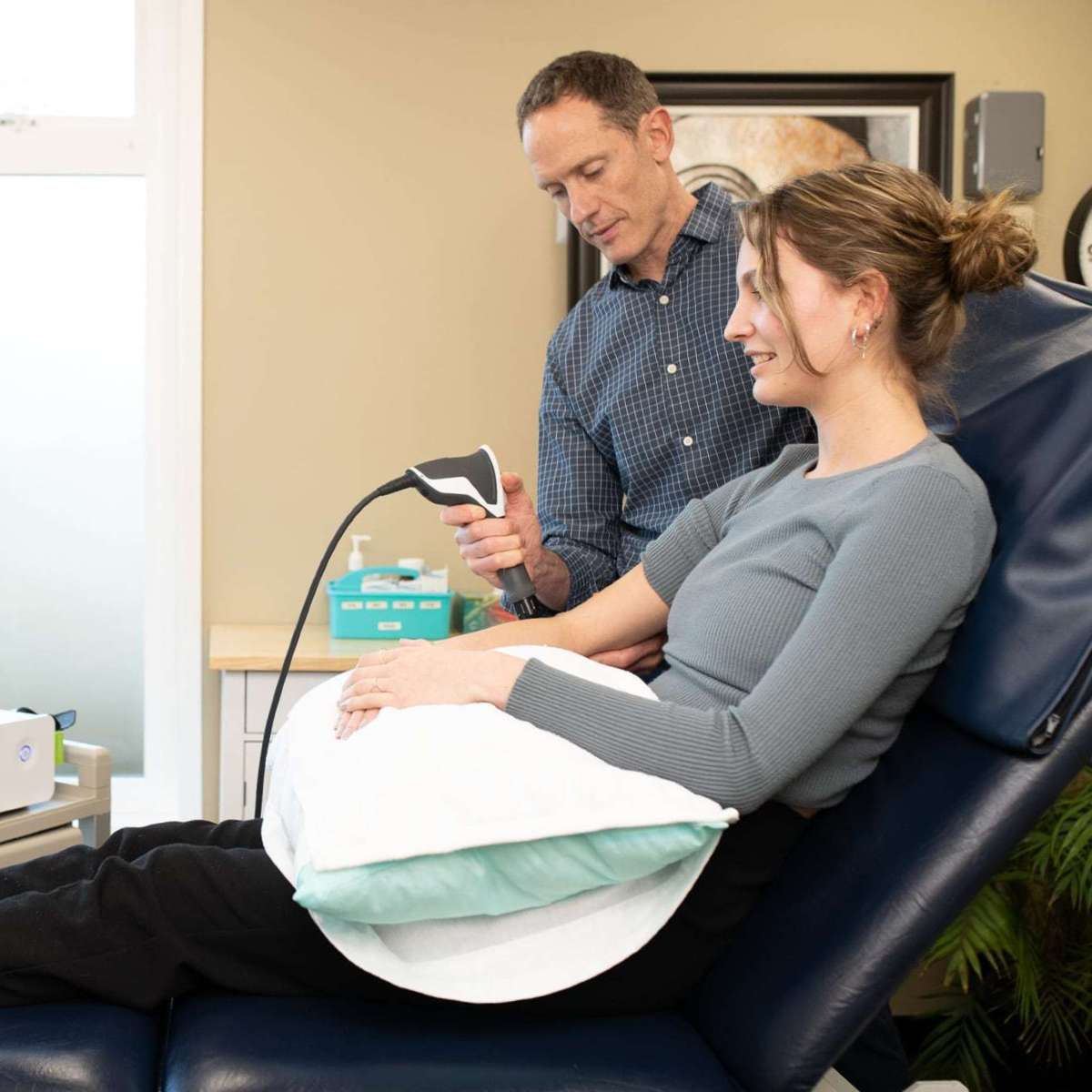Shockwave Therapy Treatments
Shockwave Therapy is a rehabilitative technique that uses directed acoustic waves to resolve a variety of musculoskeletal injuries.

What is shockwave therapy?
Shockwave Therapy, also known as Radial Pressure Waves or Radial Shockwave, is a non-invasive, effective, and affordable physiotherapy treatment where acoustic waves are directed to treatment areas.
What is shockwave treatment like?
The application of Shockwave typically lasts 4 or 5 minutes. The device that administers Shockwave is somewhat similar in appearance (though not in operation) to a “massage gun”, and is somewhat noisy.
Is shockwave therapy uncomfortable?
Shockwave treatment can cause moderate discomfort. However, the intensity will be tailored to your tolerance, and your physiotherapist will explain what to expect to ensure you are comfortable before administering any treatment.
Does shockwave produce results quickly?
Yes. Several scientific studies have shown the effectiveness of Shockwave treatment within even one or two sessions (Furia 2013, Saxena 2011, Ibrahim 2010), although the majority of injuries require four to six sessions.
Can shockwave help issues from recurring?
Yes. Long-term studies show a low return of symptoms for individuals treated with Shockwave Therapy for certain conditions.
How does shockwave therapy help?
During your initial appointment, your physiotherapist will perform a detailed history and examination to determine if Shockwave is appropriate for your condition.
Shockwave can be successful in treating many forms of chronic pain by:
- Increasing metabolism – Shockwaves influence the transmission across cell membranes and promotes the release of pain inhibiting substances in the body (d’Agostino 2015).
- Revascularization – Stimulation of microcirculation promotes tissue healing and regeneration.
- Inhibiting pain – Inhibition of pain signals occurs post treatment due to stimulation of A-β nerve fibres.
- Reducing muscle tone – Achieved by interrupting the vicious circle of pain, dysfunction, and subsequent increased muscle activation.

What evidence supports shockwave therapy?
Robust evidence supports the use of Shockwave Therapy in a variety of conditions, including shoulder calcifications, insertional tendonitis, chronic tendinopathies, muscle trigger points, and other muscle and connective tissue issues.
Supporting research
Research supports the use of Shockwave Therapy for:
- Foot issues, such as heel spurs, plantar fasciitis, and achilles tendinopathies
- Tennis Elbow and Golfers’ Elbow
- Knee issues, such as patellar tendonitis and other pain of the patella
- Calcific Tendonitis, including calcifications in the supraspinatus tendon, deltoid muscles, or other tendons of the rotator cuff
- Hip Bursitis
- Proximal hamstrings tendonitis
- Shin Splints
- IT Band syndrome
- Trigger Finger
Published findings
Published findings about Shockwave Therapy include:
- Plantar fasciitis: 72% of cases resolve with radial shockwave treatment (Gerdesmeyer 2008, and Journal of Ortho Research 2005)
- Hamstrings tendinopathy (pain in the butt): 80% recovery, compared to 10% receiving traditional care, with full return to sport for the 80% (Cacchio 2011)
- Calcifications of the rotator cuff: A 2013 systematic review with meta-analysis concluded “Shockwave increases shoulder function, reduces pain, and is effective in dissolving calcifications. Results were maintained at the 6 month mark.” (Ioppolo 2013)
Further reading
Shockwave Therapy: Scientific Studies Overview
This PDF download describes the biological actions of shockwaves that explain the beneficial effects on tissue healing and regeneration.
Get Started with Shockwave Therapy
Have questions about Shockwave Therapy or any other treatments? Visit the FAQs page or get in touch for help.


